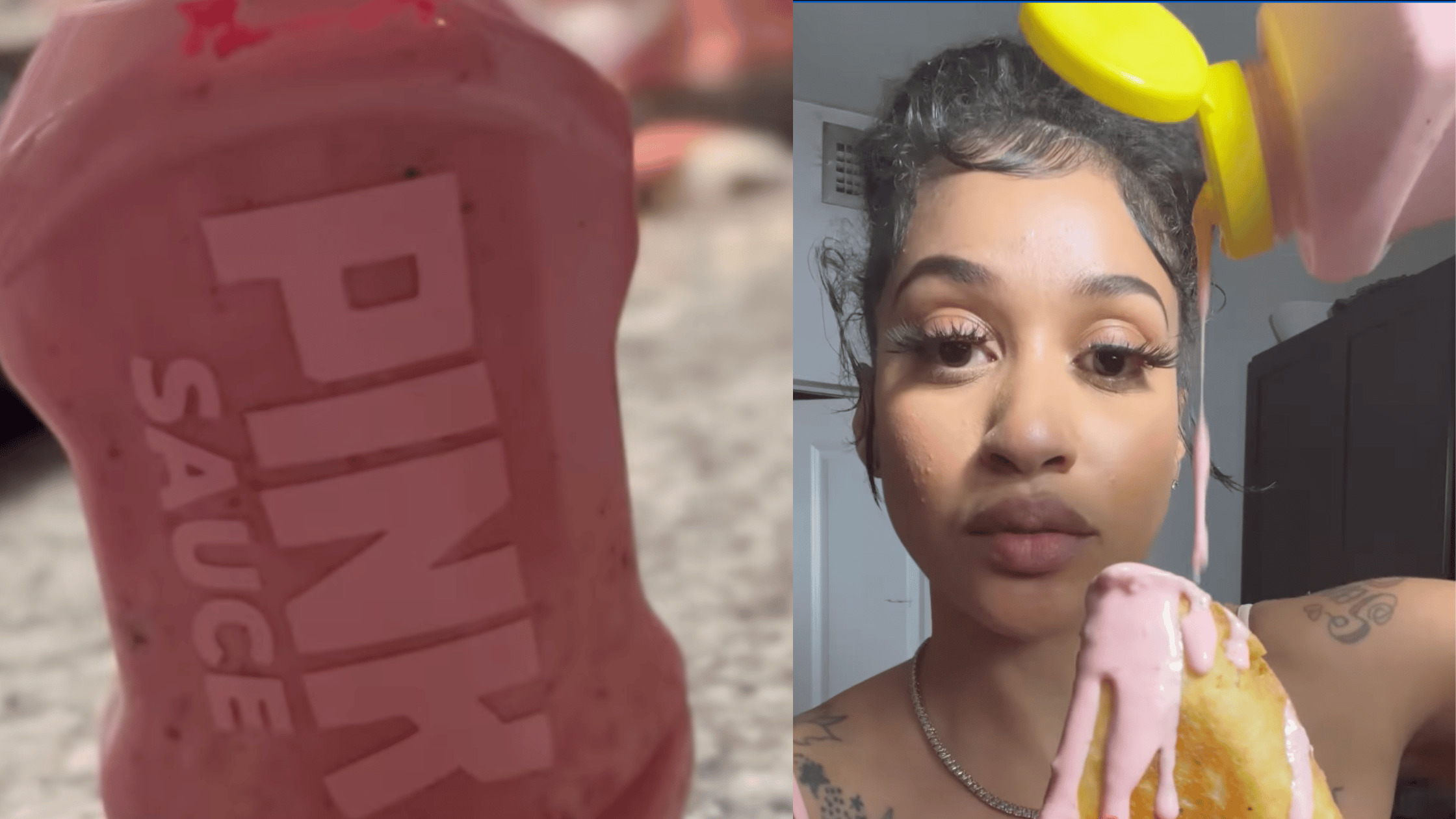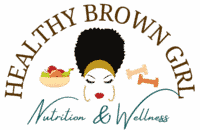
By now, you’ve heard about and seen Pink Sauce all over your social media timelines. From videos of its creator Chef Pii slathering it all over her burgers, chicken, and fries.
To Tiktokers slamming the poor quality of the packaging, inconsistency in color and texture, or shady nutrition label. Pink Sauce and the self-proclaimed Pink Sauce Lady have officially gone viral.
So you might be curious if you should give this small business owner a shot, despite recent criticism.
Let’s dig into the nutrition facts and some other nutritional implications you should consider before making your decision.
If you want to skip the ingredient breakdown, jump below to check out the nutrition label breakdown and get my final thoughts.
Pink Sauce Ingredients:
According to the nutrition facts label for the Pink Sauce, the ingredients consist of water, sunflower seed oil, raw honey, distilled vinegar, dragonfruit, pink Himalayan sea salt, and less than 2% of dried spices, lemon juice, milk, and citric acid.
Water:
Listing water first means it is the main ingredient in Pink Sauce. This is a good thing since water is essentially good for the body, non-toxic, and doesn’t carry components such as saturated fats, sodium, or sugars, which could diminish the healthiness of this product.
So far, so good.
Sunflower seed oil:
Sunflower seed oil is second, therefore it is not the main ingredient, however, it is a primary component of the Pink Sauce making it a pretty important player.
The sunflower seed oil has approximately 120 calories and 14g of fat per tablespoon. It is low in saturated, or “bad” fat, and is primarily a polyunsaturated fatty acid (PUFA), or”healthy fat”.
PUFAS are healthy because they have the potential to lower cholesterol and triglyceride levels in the blood. Monounsaturated fatty acids (MUFAS) are another component of sunflower seed oil and are “healthy” fats.
MUFAS are great for the heart and have the potential to lower the risk for heart disease.
Despite these benefits, you still want to be mindful of how much sunflower seed oil your intake. It is still a high-calorie food and can contribute to health risks associated with obesity if not consumed in moderation.
Raw Honey
Next, raw honey is a natural sweetener. Each tablespoon contains about
64 calories
17g of carbohydrates
17g of sugar per tablespoon
Honey also contains small doses of several essential micronutrients such as:
- Iron
- Magnesium
- Phosphorus
- Potassium
- Zinc
- Copper
- Selenium
- Flouride
Research has also shown honey to have phytochemicals and antioxidants which fight against free radicals that can cause inflammation and diseases such as cancer.
Be mindful that honey can cause botulism, a toxin caused by the bacteria Clostridium botulinum. This is a major concern for babies, specifically, babies under 12 months old which is why they should not eat honey.
Dragon Fruit (Pitaya):
It’s interesting that Dragon Fruit is the 5th ingredient listed despite it being primarily responsible for the Pink Sauce’s color, but I digress. Per every 3.5g serving of Pitaya you will get about:
60 calories
1.2g of protein
13g of carbohydrates
3g of fiber for every serving of about 3.5g.
It also contains small amounts of important micronutrients such as
- Vitamin C
- Iron
- Magnesium
Pitaya is also very high in antioxidants, which as stated earlier, protect against free radicals that can cause chronic diseases and inflammation.
Overall, this ingredient is a fairly safe and healthy food.
Pink Himalayan Salt:
Pink Salt’s main component is sodium chloride. It also contains trace amounts of the micronutrients, potassium, magnesium, and calcium. Despite many internet claims that pink salt is healthier than regular table salt, there is no scientific research to support that claim.
It is important to be mindful of salt intake of any kind, as excessive intake can lead to several chronic diseases, such as high blood pressure, heart disease, and stroke. Pink salt is no exception.
The USDA recommends less than 2300mg or around one teaspoon of salt per day.
Dried Spices, Lemon Juice, Milk, and Citric Acid:
These ingredients are less than 2% of Pink Sauce, so we will look at them together.
Dried Spices:
This must be where the secret lies so we can’t give any nutritional information about the spices used here.
Lemon Juice:
Lemon juice offers 2mg of sodium, 251 mg of potassium 17g of carbohydrates, and 6g of sugar per cup. It is also high in vitamin C and offers trace amounts of the micronutrients iron, B6, and magnesium.
Milk
In one cup of milk, there is about:
130 calories
8g of protein
5g of fat
12g of carbohydrates
130mg of sodium
2.3mg of vitamin C
99.1 IU of vitamin D
18.9 mg of cholesterol
Whole milk is high in saturated fat which has been shown to lead to high cholesterol and cardiovascular disease.
Citric Acid
Citric acid naturally occurs in various citrus fruits, such as lemons, limes, and oranges. It can also be manufactured in a lab to act as a food additive to add flavor or act as a preservative for certain ingredients.
Some research also suggests that citric acid can protect against botulism.
Something to note here is that this is the only preservative listed in the ingredients, which could explain the quality complaints from consumers of this product.
Since milk is used in this sauce, it should contain some preservatives like sodium benzoate or potassium sorbate to prevent the milk from spoiling quickly and protect the product during shipping…especially in today’s temps.
The Nutrition Label
Now that we’ve looked at all Pink Sauce has to offer, let’s break down the nutrition label.
According to the label, there are exactly 444 tablespoon-sized servings in one bottle of Pink Sauce. That number seems extremely off given the bottle size, so we are already off to a shady start.
The label continues:
Calories 90
Saturated fat 1g
Sodium 60mg
Carbohydrates 3g (with no added sugars), which also includes 4g of fiber, and 11g of sugar.
Label breakdown:
The Pink Sauce also offers some micronutrients, such as iron, calcium, and notable amounts of potassium and vitamin C.
Now, I’m no food label expert, however, as dietetics (nutrition) students we do learn how to read food and nutrition labels to a degree. Something that stood out was the calculations.
For example, fiber and sugar should be included in the total number of carbohydrates, but they are not. Also remember, ingredients are listed from highest amount to lowest. Therefore, since sunflower oil is listed second that makes it is one of the main components of Pink Sauce.
However, there are no unsaturated fat totals at all. And as we discussed earlier, the sunflower seed oil is high in MUFA’s and PUFA’s. Chef Pii also lists only 1g of saturated fat, which seems a bit low since sunflower oil does contain some saturated fat as well, about 2g per tablespoon.
Something else that should be noted is the calories don’t seem to add up. A calorie is calculated from the amount of energy a food contains. We determine this by breaking the food down into its macronutrients protein, fat, and carbohydrates.
For every gram of protein, you get 4 calories, a gram of fat gives you 9 calories, and carbohydrates will give you 4 calories. So when looking at Chef Pii’s calculations for Pink Sauce, the calories aren’t quite adding up.
Based on what she has listed for fat grams and carbohydrates (including the sugars and fiber), should be somewhere between 59-71 calories. However, since it doesn’t look like the amount of fat is represented accurately, even that estimate is probably way off.
There are a few more things about the label that raised an eyebrow. Like the inaccurate daily value calculations, and the potential for egg and soy allergens. Despite the source of these allergens not being listed in the ingredients which are a Food and Drug Administration (FDA) requirements.
Final Thoughts:
This article is not meant to influence to try or to not try Pink Sauce, only to highlight the facts. That decision is ultimately yours.
Would I try Pink Sauce today? Nah. No. No thanks. To start, I can’t imagine any sauce being worth $20, but I’m also a mom of 3 looking to save in any way I can.
Next, the shady label, lack of preservatives, and manufacturing procedures are just a few red flags that are worth HEAVY consideration. Another major point of contention is that Pink Sauce at this time is not FDA approved..meaning probably not safe for consumption….yikes!
Since Chef Pii appears to prepare this sauce with the intent to sell it nationwide, she should be in compliance with the FDA and her state health department regulations.
At a minimum, they would also ensure that the ingredients are properly listed and calculated on the nutrition facts label, something she clearly needs assistance with.
It’s pretty safe to say that Chef Pii is unaware of these regulations even though she is packaging and selling a product meant for human consumption. Yet another red flag.
I think Pink Sauce has potential, and while Chef Pii’s pink sauce went viral for all the wrong reasons, the door is wide open for some other big named company to come along and distribute a healthier, safer version of her product.
You might be thinking that the ingredients (the ones we know about) seem harmless and even healthy. But the overwhelming number of red flags leave me and many others questioning the legitimacy of Chef Pii’s product and the nutrition label’s veracity. With good reason.
Despite all this, according to Chef Pii’s Instagram, she is preparing to relaunch Pink Sauce for her followers. In my book, She gets major points for ignoring the internet scrutiny!
However, she should consider making some adjustments at least for the safety of her supporters.

I hold an undergraduate degree in Nutrition and Dietetics, and am currently pursuing my masters degree in Positive Psychology. I am also member of The Academy of Nutrition and Dietetics so I can stay up to date on all the latest nutrition news and research. I am dedicated to sharing what I have and am learning both personally and professionally with women seeking to lose weight and improve their lifestyles.
